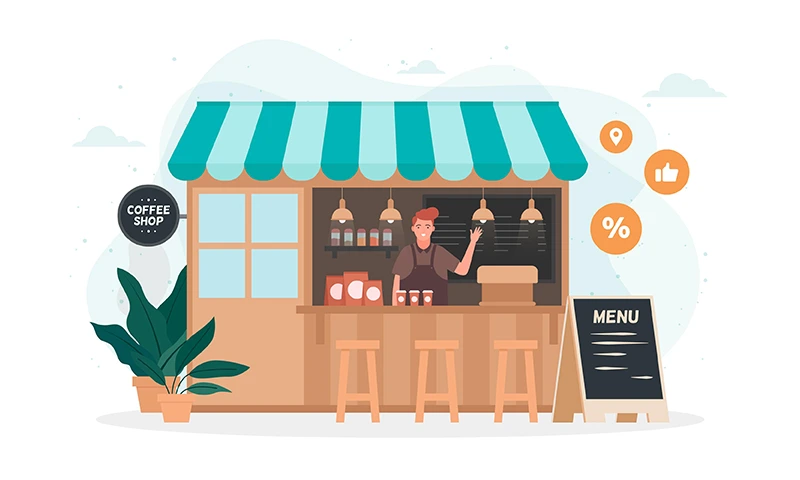How to Secure Website
It has become something that must be embraced in the current age of the internet where we have found ourselves. Cyber threats are evolving constantly; thus, an unprotected site may cause serious problems such as loss of data and client retainment issues. But then again, not all entrepreneurs are open-minded enough about rising protective mechanisms since they tend to slow down websites which eventually leads into bad user experiences and low search engine optimization rankings.
However, there is good news for you! This article will highlight the best practices that ensure a website remains secure yet fast at all times
The Importance of Website Security
To begin with, website security is necessary for the protection of sensitive data such as customer details, payment particulars and proprietary organizational information. Among other things, a breach can result into financial losses while damaging your brand’s image. In addition, Google has been known to rank secure sites better than the rest. If your site is flagged unsafe this can be one way you’ll lose traffic since it will drop away from being listed in search engines further compounding its chances of conversion.
What about speed though? Users expect websites to load within three seconds at most. If there is any delay even for just a few seconds then bounce rates are raised within even greater proportions thus causing missed sale opportunities altogether. Therefore achieving an equilibrium between security and quickness becomes necessary.
The Fundamental Aspects That Affect Website Speed and Security
Before jumping into solutions, it’s important to know the things that affect website speed as well as security. Some aspects are naturally interconnected, implying that dealing with one can influence the other. Below are the major elements:
- Hosting Provider
- SSL/TLS Certificates
- Website Architecture
- Content Delivery Networks (CDNs)
- Caching Mechanisms
- File Sizes and Compression
- Firewall and Security Plugins
Each of these plays an important role in maintaining a good balance between speed and safety. Let’s analyze how you can optimize them without sacrificing one over the other.
1. Choose a Reliable Hosting Provider
In the rapid world that we live in, one of the most important factors to consider when estimating a website’s performance is the hosting provider. It is paramount to choose a host who provides:
- Protection against DDoS attacks, malware scanning, and automatic backups are among the advanced security features.’
- To reduce load time, make sure you use fast servers located near your target market.
The most affordable option is shared hosting, but this might affect both speed and security. Thus, VPS or dedicated server will provide users with more control over their resources.
2. Apply SSL/TLS Encryption
A fast, secure website can easily be achieved by enabling SSL/TLS certificates. It encrypts data that is used to transmit between user browser and server, thus ensuring safety of private information.
Hence, the modern SSL/TLS certificates do not affect the performance of a website very much and Google incorporates HTTPS in its ranking factors. Switching over to HTTPS will support your SEO efforts too while at the same time keeping your site safe.
3. Utilize a Content Delivery Network (CDN)
A Content Delivery Network (CDN) can significantly improve your website’s speed and security. CDNs store copies of your site on servers across various geographical locations, allowing users to load your website from the closest server.
In terms of security, CDNs offer additional layers of protection against DDoS attacks and malicious traffic, filtering them before they reach your main server. This way, you reduce the load on your server, improving both performance and security.
4. Enhance Caching to Improve Performance
Your greatest weapon against site speed is caching. Caching enables browsers to load some parts of your web page from the computer’s memory rather than from the server each time a visitor comes to it. Pictures, CSS files, and JavaScript are usually cached.
However, caching also serves as a way to secure your website. By having fewer requests to send to your server, the chances of being attacked by cybercriminals become slim. Therefore, make sure you do browser caching and server-side caching for best results.
5. Reduce and Optimize Files
When it comes to slowing down websites, large files invariably are the main offenders. To enhance both speed and security, you should:
- Minimize CSS, Javascript, and HTML files by removing unwanted characters and gaps.
- Compress images to lower their size without affecting quality at all.
It is possible to use several tools such as Gzip or Brotli for file compression that help in reducing loading times considerably. Additionally, small sized files help in reducing the number of requests made to server thus preventing possible security threats.
6. Maintain the Latest Version of Website Software
An obsolete software is one of the common points of entry for most hackers. Regularly updating the website creates a guarantee that all known vulnerabilities are protected against through the CMS, themes and plugins involved therein.
However, do not install excess plugins that are not necessary. Some of these add-ons can make your site to lag behind and become insecure at the same time; hence it is advisable to only use those essential ones with performance boosting and protection features integrated into them.
7. Use Web Application Firewalls (WAFs)
As an essential security component, Web Application Firewall (WAF) safeguards your website from numerous cyber threats including SQL injection attack (where an attacker is able to insert malicious code into a back-end database) among others such as cross site scripting (XSS) and malware. The WAF acts like an intermediary between the user and the server filtering out bad traffic before it reaches the site properly meaning you only have good stuff coming through.
In addition, there are several WAFs on the market including Sucuri or Cloudflare who provide system that is directly incorporated with contents delivery networks (CDNs) for instance; therefore what happens is that these security measures start working without affecting speed in any way.
8. Allow HTTP/2 for Quicker Load Times
The latest version of the HTTP protocol is HTTP/2, which has numerous enhancements over the previous version, including quicker page loading times and improved resource usage. More importantly, it supports multiplexing, which reduces load times by allowing a browser to manage several requests at once.
Currently, HTTP/2 is accepted by many modern servers and browsers, thus; enabling it will give your website a speed boost without risking security
9. Keep an Eye on Your Site’s Security and Performance
Just applying security measures and praying isn’t good enough; regular checking on the performance and security of your website is essential. Google PageSpeed Insights would help you measure the time taken to load your website andla same time detect any vulnerability within.
With automated monitoring tools, you can be instantly alerted if there are slowdowns in performance or signs that system might be hacked, so that actions against it may be taken before it morphs to a full-fledged case.
10. Backup Your Website Regularly
Your site can be as secure as Fort Knox, but you never know when a calamity may happen. Regular website backups keep your site tidy; hence, you can always restore it quickly after an attack or any other data loss without having to wait for a long time.
Most web hosting providers provide automatic backup services which allow you to schedule periodic backups without affecting the loading speed or overall performance of the website.
Conclusion
Not only is it possible to attain the perfect equilibrium between security and speed of websites; it is also an essential aspect of successful online activities. With the above steps outlined, a designer can have a website that is fast and secure at the same time, cherished by both search engines as well as users’. Reliable hosting providers as well as enabling caching are some of these strategies which guarantee that the site remains protected without having to suffer from reduced performance. A website that is secure earns confidence, while one that is fast has numerous repeat visitors. For your online presence to be fruitful, you need to optimize both!














